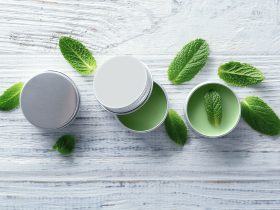When it comes to hair, you’re born with all the follicles you’ll ever have, typically numbering between 80,000 to 120,000 on your scalp alone.
Hair growth begins from a root located at the base of each follicle beneath your skin. Blood vessels in your scalp deliver oxygen and nutrients to these roots, supporting the growth process.
As hair emerges from the skin, it passes by an oil gland, which secretes oil to keep the hair shiny and soft.
While it’s normal to lose approximately 100 hairs per day as part of the natural growth cycle, genetic factors and other influences may lead to increased hair loss.
Here are 13 strategies from experts you can implement to promote hair growth and minimize breakage.
Top 13 Tips to Grow Stronger Hair
- Use Essential Oils
Harness the power of essential oils to not only delight your senses but also to potentially promote hair growth.
Recent research, such as a 2021 study, suggests that certain essential oils, like pumpkin seed oil, when applied topically, can significantly enhance hair regrowth, particularly in individuals experiencing female pattern baldness.
While the results are promising, larger-scale studies are necessary to validate these findings further.
In addition to pumpkin seed oil, several other essential oils have shown potential in preventing hair loss and encouraging hair growth.
These include rosemary oil, peppermint oil, jojoba oil, and lavender oil. If you incorporate these essential oils into your hair care regimen, you may tap into their beneficial properties to support a healthier scalp and promote the growth of stronger, more resilient hair strands.
Be aware of the hair oiling mistakes you need to avoid if you want your hair to grow quicker and be stronger.
- Give Caffeine-infused Products a Try
Consider incorporating caffeine-infused products into your hair care routine as they may offer benefits for promoting growth.
Research from a 2020 review indicates that caffeine, when applied topically in products such as shampoos and conditioners, could be as effective as drug-based treatments in preventing hair loss.
The caffeine works by stimulating cell metabolism and proliferation, potentially encouraging hair growth.
- Reduce Stress Levels
Take proactive steps to reduce stress, as chronic stress can potentially contribute to hair loss by triggering follicles to enter a resting phase, resulting in shedding rather than growth of new strands.
Here are some helpful tips to help alleviate stress:
- Engage in regular exercise to promote relaxation and release tension. Physical activity is known to reduce stress hormones and boost endorphin levels, enhancing overall well-being.
- Practice meditation as a mindfulness technique to calm the mind and cultivate inner peace. Meditation can help reduce stress levels and promote a sense of clarity and serenity.
- Consider journaling as a therapeutic outlet to express thoughts and emotions, providing a sense of relief and clarity. Writing in a journal can help process stressors and gain perspective on challenging situations.
- Maintain a well-balanced and nutritious diet rich in essential nutrients to support overall health and resilience to stress. Consuming a variety of nutrient-dense foods can help regulate stress hormones and promote physical and mental well-being.
- Get Scalp Massages
Treat yourself to a scalp massage as a relaxing and potentially beneficial practice for both your hair and overall well-being.
A 2016 study explored the effects of daily 4-minute scalp massages and found that after 24 weeks, participants experienced thicker hair compared to the beginning of the study. While larger studies are needed to confirm these findings, scalp massages may still offer advantages.
Although the study didn’t demonstrate a significant increase in hair growth, scalp massages may have other benefits. They could potentially dilate blood vessels beneath the skin, leading to stronger, thicker hair less prone to breakage or damage.
Whether you opt for a professional scalp massage or indulge in a DIY session at home, incorporating scalp massages into your routine may contribute to healthier hair and a sense of relaxation and stress relief.
- Do Not Practice Restrictive Dieting
Restrictive dieting poses a significant threat to optimal hair growth, depriving the body of essential resources and nutrients crucial for healthy follicle function.
As the body prioritizes vital physiological functions over hair growth, the stress induced by restrictive dieting can swiftly halt the hair growth cycle.
Even after reverting to a balanced diet, the repercussions of restrictive dieting can linger, manifesting as prolonged shedding for several months as the body recalibrates its nutrient levels.
Furthermore, sudden weight loss can exacerbate the issue, triggering a temporary shedding condition known as telogen effluvium or diffuse alopecia.
This shedding is often linked to deficiencies in vital nutrients such as niacin, highlighting the intricate relationship between diet and hair health.
To counteract these detrimental effects, adopting a balanced approach to nutrition is crucial, ensuring the body receives the necessary nutrients to support robust hair growth and minimize the risk of shedding.
- Limit Hair Coloring
Be mindful of the impact of hair coloring on the strength and thickness of your hair, as it can potentially lead to damage.
According to a 2021 review, the use of permanent hair dyes may strip away the natural fatty acids present in the hair, contributing to increased damage compared to nonpermanent options.
Given these findings, it’s advisable to exercise caution when coloring your hair, particularly with permanent dyes. Opting for nonpermanent alternatives or minimizing the frequency of coloring sessions can help mitigate the risk of hair damage and preserve the health and vitality of your locks.
Prioritizing gentle treatment and using hair care products specifically formulated for color-treated hair can also help maintain the integrity of your strands while indulging in your desired aesthetic changes.
- Be Mindful of Your Protein Intake
Assessing your protein intake is crucial for promoting optimal hair growth and minimizing shedding.
When your diet lacks sufficient protein due to severe restrictions, it can impede the growth of healthy hair follicles, leading to potential shedding issues. To support robust hair growth, it’s essential to maintain a well-balanced diet that includes an adequate amount of protein.
As a general guideline, experts recommend consuming 50 grams or more of protein per day to ensure your body has the necessary building blocks for healthy hair development.
By prioritizing protein intake as part of your daily nutrition, you can nourish your hair from within and help maintain its strength and vitality.
- Increase Your Nutrient Intake
Enhance your nutrient intake to support healthy hair growth and maintain its structural integrity. According to a 2017 review, deficiencies in certain key nutrients can adversely affect both the structure and growth of your hair.
Some of the nutrients crucial for hair health include iron, zinc, fatty acids, selenium, and vitamins D, E, and A, as well as folic acid. Ensuring an adequate intake of these nutrients through your diet or supplementation can help promote optimal hair health.
Moreover, a 2015 study demonstrated the potential benefits of omega-3 and omega-6 supplements in protecting against hair loss, particularly in individuals with female pattern baldness.
Prioritizing a nutrient-rich diet and considering targeted supplementation can help you optimize your nutrient profile and contribute to the vitality and resilience of your hair.
- Try Using Antioxidants to Your Scalp
Consider incorporating antioxidants into your scalp care routine to potentially mitigate hair loss and enhance scalp health.
A 24-week study revealed that participants using either a shampoo or leave-in scalp treatment containing the antioxidant piroctone olamine experienced notable increases in hair volume and improved scalp conditions compared to those using placebos.
These antioxidants have demonstrated the ability to improve and fortify the scalp barrier, potentially leading to a reduction in hair thinning.
Antioxidant-rich formulations may contribute to healthier hair growth and scalp condition. Incorporating products containing antioxidants into your hair care regimen could be a beneficial step toward maintaining robust and vibrant locks.
- Get Regular Trims
Regular hair trims every few months can promote the growth of healthier hair by removing split ends and preventing them from traveling further up the strands, thereby reducing the risk of hair breakage.
However, it’s important to note that while regular trims contribute to the overall health and appearance of your hair, they do not directly affect the rate of hair growth. Hair typically grows at a rate of about half an inch per month, regardless of how often it is trimmed.
- Avoid Using Heat on Your Hair
Protect your hair from damage by minimizing exposure to heat from curling irons, hair dryers, and straighteners, as they can lead to breakage and deterioration.
To mitigate potential harm, consider reducing the frequency of using these tools and lowering the temperature when you do use them.
Furthermore, a 2019 research review suggests that applying a heat-protectant product before using heated styling tools can substantially decrease hair breakage.
These products function by creating a protective barrier that helps retain moisture during heat styling, thereby safeguarding your hair from damage.
Prioritizing the use of heat-protectant products can help preserve the health and integrity of your hair, allowing you to enjoy styling without compromising its quality.
- Protect Your Hair During Sleep
Ensure the health of your hair during sleep by implementing the following practices:
- Aim for 7–9 hours of sleep each night to support optimal hair growth. Inadequate sleep can reduce melatonin production, a hormone crucial for regulating hair growth.
- Use a silk or satin pillowcase to minimize friction, tugging, and tangling, which can lead to hair breakage. These smooth fabrics create a gentler surface for your hair, helping to maintain its strength and integrity.
- Avoid sleeping with wet hair, as this can weaken the strands and make them more susceptible to breakage or tangling. Allow your hair to dry completely before going to bed to prevent damage and maintain its health.
- Use Minoxidil
Consulting with a doctor about minoxidil, a medication commonly sold over-the-counter as Rogaine, is advisable for those seeking to address hair loss concerns.
While minoxidil may help prevent hair loss and stimulate hair growth, its efficacy varies among individuals, and visible results may take up to 12 months to manifest. It is recommended to incorporate minoxidil as part of a comprehensive hair loss treatment plan, rather than relying solely on this medication.
However, it’s essential to seek guidance from a healthcare professional before starting any hair loss treatment regimen to ensure suitability and maximize effectiveness. Consulting with a doctor can provide personalized recommendations and guidance tailored to individual needs and circumstances.
Final Thoughts
In summary, achieving optimal hair growth requires consistent care and attention rather than relying on instant solutions.
Emphasizing a nutrient-rich diet, particularly one abundant in protein, serves as a foundational element for promoting hair health.
Additionally, utilizing specific hair products and treatments can support growth, while reducing the frequency of heat treatments and chemical processing can aid in preventing damage.
If experiencing concerns regarding hair loss or difficulty in achieving desired hair growth, seeking guidance from a doctor is advisable.
Consulting with a healthcare professional can help identify underlying factors contributing to hair issues and determine appropriate courses of action to address them effectively.
















Find Us on Socials